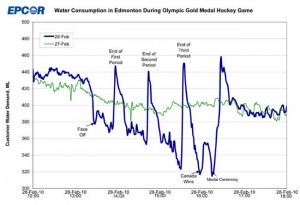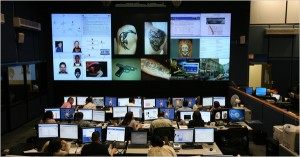The New York Times online has 3 articles about their 2010 decennial census (1)(2)(3)(topic). India will be conducting its count +/- 1 000 000 000 people, and this year’s census includes biometrics. Every person of 15 + years will have their photo and a thumbprint taken. India will then be producing national ID cards. This is no small administrative undertaking as
some 2.5 million census officials will visit households in more than 7,000 towns and 600,000 villages
This count will, for the first time, also attempt to gather information on the use of the internet and the availability of drinking water and toilets in households.
The commentaries in the BBC article consider this a move into the modern age for India. It is ironic that the first country to implement the infrastructure of biometrics with that of census taking does not have universal education, let alone access to clean water & toilets for all, nor a telecom system that can deliver a landline within a year after it has been requested and incredible illiteracy. The comments in the article remain positive.
The Canadian census will be conducted in May 2011. This counting exercise is an incredibly powerful institution, it is one of the biggest administrative collective events the country undertakes, and approximately 80 pieces of legislation spin into action once the count is released. The census is also intricately tied to our representative electoral system, it is its raison d’être. Federal Electoral Boundaries change after the 01 decennial censuses and this has been so since the taking of the first confederation census of 1871.
According to the Electoral Boundaries Readjustment Act:
14. (1) On receipt by the Chief Electoral Officer from the Chief Statistician of the return referred to in section 13, the Chief Electoral Officer shall calculate the number of members of the House of Commons to be assigned to each of the provinces, subject and according to the provisions of section 51 of the Constitution Act, 1867 and the rules provided therein, and on the completion of that calculation shall cause a statement to be published in the Canada Gazette setting out the results thereof.
The exercise of mapping these new boundaries happens thereafter:
28. As soon as possible after the issue of the proclamation declaring the representation order to be in force, the Director General of the Surveys and Mapping Branch of the Department of Natural Resources shall, in accordance with the descriptions and definitions set out in the order, and with the cooperation of the Chief Electoral Officer, prepare and print
Counting matters, how we count matters even more, and the count shapes our form of administrative nationalism.
In the US the Census is a public record, in Canada it is sold back to us. According to the Statistics Act we are legally bound to fill out the census
(2) Subject to section 8, a person to whom a form is sent pursuant to subsection (1) shall answer the inquiries thereon and return the form and answers to Statistics Canada properly certified as accurate, not later than the time prescribed therefor by the Minister and indicated on the form or not later than such extended time as may be allowed in the discretion of the Minister. 1970-71-72, c. 15, s. 22; 1980-81-82-83, c. 47, s. 41.
The agency is however not bound to share these data at no cost with the citizens it counted, and when it does sell the data the use licenses are incredibly restrictive. Citizens who want Statistics Canada data have to purchase them while resellers make a profit by reselling them their own records. Making the Census a public record in the public domain and building an infrastructure to disseminate these data, would be a way to liberate our data. That would be part of open government strategies, it is what open data is about, and is also a way to encourage more informed deliberative democracy.
Now would be the time to push for more open access to our census data!



Comments on Posts